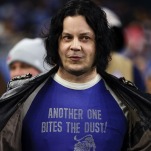In 1978, distance runner John L. Parker self-published a novel about the world of college track and field, focusing on the struggles of a gifted runner to break the four-minute mile and join the elite distance fraternity. Over the decades, he went through 10 printings and about 100,000 copies, selling them out of the trunk of his car at meets. And by the time they were all gone, the book had become a legend among some runners who mined it for inspiration and passed along battered copies to their friends. Thirty years after its composition, Once A Runner is finally available from a major publisher. Its dated setting and somewhat cliché plot detract little from its powerful presentation of the peculiar community and interior world of distance men.
Parker's autobiographical stand-in is miler Quenton Cassidy, an undergraduate at a Florida college and captain of the track team. Starting in the fall with cross-country, continuing through the winter indoor season, and culminating in the spring outdoor relays—real running, in other words—the novel follows Cassidy and his enigmatic mentor Bruce Denton, graduate student and Olympic gold medalist in the 5000 meters, as they train endlessly, deal with the athletic department, and meditate on their singular obsession. When Cassidy runs afoul of the football coach and college president (buffoons and reactionaries who see commie influence in the slightest student activism), he becomes a hermit during the months leading up to the Southeastern Relays, four minutes in which he can test himself against the greatest miler of his time.
Once A Runner would never be mistaken for a novel written during any other period than the seventies; it's peppered with references to Vietnam and High Plains Drifter. But its spirit harkens back rather charmingly to the collegiate craze of the pre-World War II era. Dorm life dominates, co-eds are pursued, and hijinks abound. One chapter consists entirely of an elaborate prank: a fake judicial proceeding against a teammate, complete with Latinate legal obfuscation. Probably these varsity-confidential elements are not what endeared the novel to a generation of runners. And in fact they fade as the novel reaches its climax: a step-by-step, breath-by-breath description of Cassidy's career-making race—run incognito, ironically—on the same oval where the story begins in flash-forward. Reading it is as close as most readers will ever come to oxygen debt. Even though the sensibility of Once A Runner belongs to an era long gone, the novel's idiosyncrasies only serve to highlight its singularly powerful portrayal of the distance runner's experience.







![Rob Reiner's son booked for murder amid homicide investigation [Updated]](https://img.pastemagazine.com/wp-content/avuploads/2025/12/15131025/MixCollage-15-Dec-2025-01-10-PM-9121.jpg)

























![HBO teases new Euphoria, Larry David, and much more in 2026 sizzle reel [Updated]](https://img.pastemagazine.com/wp-content/avuploads/2025/12/12100344/MixCollage-12-Dec-2025-09-56-AM-9137.jpg)







